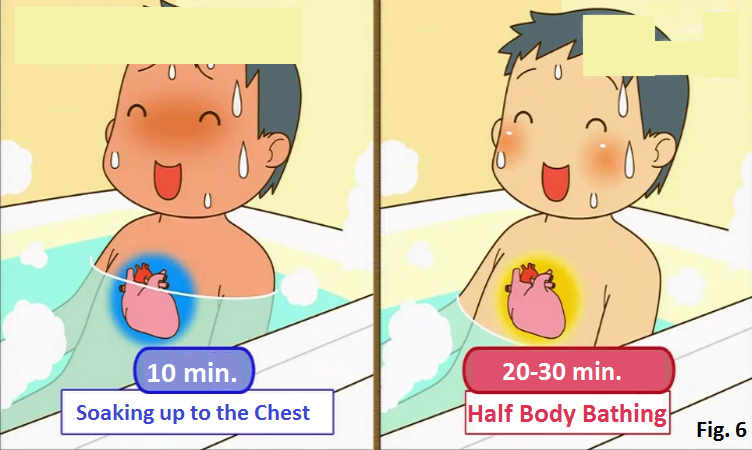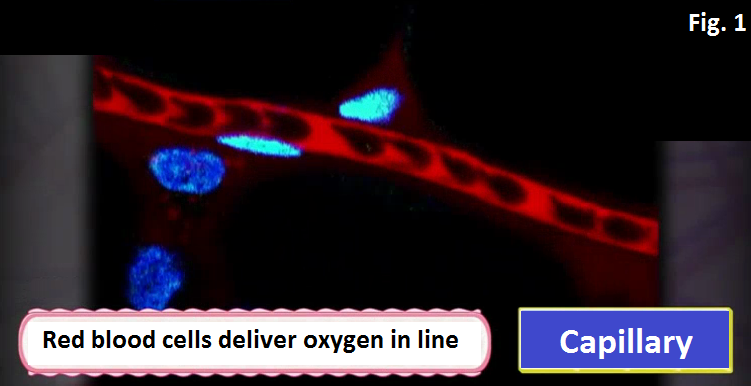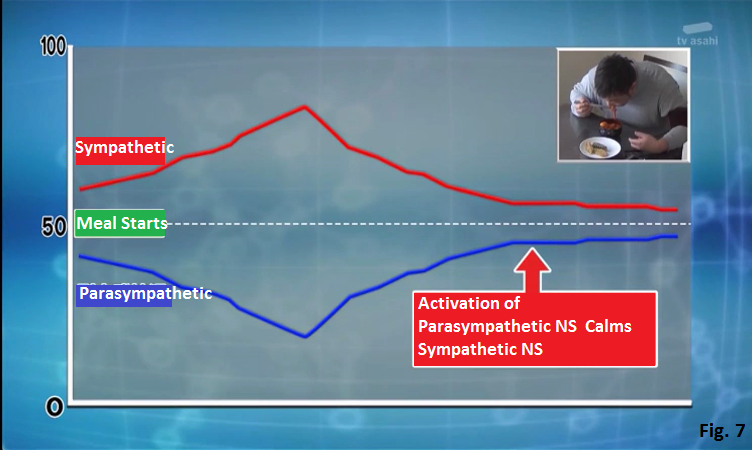|
The amount of vitamin D in the body is proportionate to cognitive function and the strength of legs.
Function of Vitamin D Vitamin D restores declining body cells. We have about 60 trillion cells. The cells are damaged and decline by aging and others. Vitamin D restores the cells and protects around the cells. Usually nerve cells in the brain and muscle cells are not easily restored, but vitamin D is expected to be able to restore them. How to increase Vitamin D The amount of vitamin D in the blood expected to be effective for our health is 30 ng/ml There are very few people whose vitamin D is more than 30 ng/mL. In a research, there are only 2 people among tested 300 people. 1 slice of salmon (100 grams) contains vitamin D of 40 shiitake mushrooms which is considered containing a lot of vitamin D. In a town in Japan where the cultivation of salmon is popular, there were 30 time more people whose vitamin D is more than 30 ng/mL. The efficient way to intake vitamin D from salmon is eating the skin of salmon as well. Vitamin D is oil soluble and there is a lot of vitamin D between the skin and the flesh of salmon. The skin of salmon has more vitamin D than the flesh.
0 Comments
 The causes that the capillary decreases Q6. Which shoes decrease the capillary? (A) Tight sneakers (B) Loose sandals A6. (A) Tight sneakers Shoes that don’t fit well can cause ghost vessels. Especially tight shoes compress the capillary and make the blood circulation bad. It is necessary to choose the shoes which perfectly fit your feet. Even if you wear shoes fitting your feet, exercising with wearing the shoes for long time accumulates waste products in the feet and makes the feet swollen, so it is important to take off shoes and release the pressure. High heels put a weight on the toes and compress the capillary of the toes, causing ghost vessels. To prevent the decrease of the capillary, it is better to take off high heels every 2 hours and massage the feet. Clothes tightening your body such as skinny jeans also decrease the capillary, so it is better to wear such clothes not every day but a few times a week. Q7. Which sitting posture decreases the capillary? (A) Leaning against backrest (B) Stoop A7. (B) Stoop The heart is located in the front side of the body so blood is delivered from the heart through the back side of the body. Stoop posture makes the curve of the blood vessel steep and decreases the blood delivered to all over the body. If you continue the stoop posture for a long time, the blood circulation of all the body becomes bad, causing ghost vessels of the capillary (Fig. 2). Sitting with crossing your legs is not good for the capillary as well. There is an artery behind the knee which delivers blood to the tip of toes. Crossing the legs compresses the artery, preventing the blood circulation to the toes. Proper sitting posture is straightening the back to reduce the curve of the blood vessel and spread the blood to the peripheral capillary. Q8. In which part of the body does the capillary decrease if you massage strongly? (A) Face (B) Legs A8. (A) Face Continuous strong pressure on the face cuts the capillary because there is less fat and muscles on the face. So it is better to massage the face as lightly as possible. How to increase your capillaries within a week Q9. Which is more effective to increase the capillary? (A) Massaging ears (B) Rotating wrists A9. (A) Massaging ears (Fig. 3) The important thing is massaging peripheral parts of the body such as the ear because it increases blood flow and sends blood to the ghost vessels, resulting in healthy capillaries. It is good to massage the ears, twisting and pulling the ears a little bit for about a minute. It is effective that the ear becomes red and you feel warm on your face (cheek). Massaging the tips of the fingers increases blood flow of all the arms. Massage the sides of the nail and top and bottom of the nail for about 40 seconds a finger. Rubbing the skin of the arm toward the heart increases blood flow more. Q10. Which has a lot of capillaries and is effective to increase capillaries by giving stimulation? (A) Achilles’ tendon (B) Calves A10. (B) Calves A lot of capillaries are concentrating in the calves. Stimulating the calves makes the blood tending to be stored in the lower body start flowing. That leads to increase the capillary. Flexing and extending the ankles make the blood easily go back to the heart. (Fig. 4) When you can’t take off your boots due to swelling of the legs, doing this exercise makes easier to take off your boots. It is good to do this exercise 20 times a day in the morning and at night. Q11. Which ingredient stops the decrease of the capillary? (A) Honey (B) Cinnamon A11. (B) Cinnamon Cinnamon contains a substance which activates Tie2 which prevents the capillary from becoming ghost vessels. Taking cinnamon prevents 90 % of the leakage of blood from the capillary which causes ghost vessels. The cause of ghost vessels is that wall cells are peeled off from the capillary. Tie2 connects the wall cells to the capillary and keeps them strong. About 0.6 gram (1/2 teaspoon) a day is good. Too much intake of cinnamon can cause disorders of other organs. Rooibos tea, piper longum and Chinese quince (as a candy) also can activate Tie2 (Fig. 5). Q12. Which cooking method prevents the decrease of the capillary? (A) Grilled meat (B) Shabushabu (thin slices of meat parboiled in hot soup) A12. (B) Shabushabu AGE contained in a burnt deposit damages the capillary! When AGE reacts with RAGE which is contained in the blood vessel, that stimulates and damages the blood vessel. A burnt deposit of any food contains AGE. Q13. Which bathing method can be expected to increase the capillary? (A) 42 degrees C (107.6 degrees F) for 3 minutes (B) 40 degrees C (104 degrees F) for 10 minutes A13. (B) 40 degrees C (104 degrees F) for 10 minutes Soaking in warm water of about 40 degrees C activates parasympathetic nervous system, the blood vessel expands and blood circulation gets better, leading to the increase of the capillary. On the other hand, soaking in warm water of 42 degrees C contracts the blood vessel and the blood pressure goes up. It is recommended to soak in lukewarm water for a little long time until you get slightly sweat. If you soak up to the chest, 10 minutes is good and if you soak up to a little above the navel, 20-30 minutes is good (Fig. 6). Q14. Which bathwater additive can be expected to increase the capillary? (A) Carbonated bath additive (B) Bath salt A14. (A) Carbonated bath additive Babbles of carbonated bath additive stimulate the capillary near the skin and increase blood circulation. High concentrated one is more effective. What is the capillary?
(1) How many capillaries are there in the body? There are about 10 billion capillaries in the body. 80 % of the body except the muscle and the bone is the blood vessel and 99 % of the blood vessel is the capillaries. If 10 billion of the capillary are connected, the length becomes two and a half rounds of the earth, about 100 thousand km. (2) What does capillary do? The artery is the blood vessel to pump out the blood from the heart. The vein is the blood vessel to return the blood to the heart. The capillary is the blood vessel to provide nutrition and oxygen to the cells and to collect carbon dioxide (CO2) and wastes from the cells between the artery and the vein. The capillary trades unnecessary things for necessary things. The capillary has a lot of holes and there is proper amount of leakage from the holes to provide nutrition and oxygen to the cells around. But if the wall cells which protect the capillary are damaged, the amount of the leakage increases, drying up the capillary and losing the function of the capillary. If the blood flow continuously stops in the capillary, the capillary itself disappears. This is ghost vessels. (3) How old does the capillary easily decrease from? The capillary easily decreases from 40s. According to a research, the number of capillaries of 60s is 40 % less than 20s. The capillary and dangerous diseases Q1 Which is worsened by the decrease of the capillary? (A) Effect of medicine (B) Quality of sleep A1. (A) Effect of medicine Even if the medicine is very effective, the decrease of the capillary makes the effect of the medicine drastically reduced. An anticancer agent was administrated to a mouse developing cancer. The anticancer agent reached only some of the area. The leakage from the capillaries leaks the anticancer agent as well, so the anticancer agent doesn’t reach the required area. Q2. Which can be caused by the decrease of the capillary? (A) Easily having an attack of anemia (B) Easily catching a cold A2. (B) Easily catching a cold The decrease of the capillary causes the decline of the immune system, resulting in catching a cold easily. White blood cells which are immune cells and protect the body from the pathogens, but they can’t go to the place where they need to fight against the pathogens because of the disappearance of the capillary, resulting in catching a cold easily. Q3. Aging of the skin is closely related to the decrease of the capillary. Which are not spread all over the cells of the skin and becomes the main reason of the aging of the skin? (A) Oxygen and nutrition (B) Oxygen and water A3. (A) Oxygen and nutrition New cells are produced by the oxygen and nutrition delivered by the capillary. Healthy skins exchange old cells to new cells, which is the metabolism of the skin. Water is necessary, but the cell has the ability to produce water from the oxygen and nutrition. The thickness of the capillary is 5 to 10 micron so a red cell which is 8 micron can pass through somehow (Fig.1 ). The thickness of the capillary is about one tenth of a hair. Q4 Which is the reason that the risk of stroke and heart attack rises by the decrease of the capillary? (A) Because high blood pressure tends to happen (B) Because thrombosis tends to happen A4. (A) Because high blood pressure tends to happen If the blood flow of the capillary is not good, nutrition and oxygen are not provided sufficiently. The heart detects the abnormality and rises the blood pressure to provide more blood. The blood vessel becomes hard to bear the high pressure of the blood from the heart. That makes the pressure even higher. High blood pressure rises the risk that the blood vessel ruptures. If the rupture happens near the brain, it causes stroke and if the rupture happens near the heart, it causes heart attack. Q5. Which risk becomes higher due to the decrease of the capillary? (A) Alzheimer’s disease (Dementia) (B) Pneumonia A5. (A) Alzheimer’s disease (Dementia) The brain which requires 15 % of all the body’s blood is filled with capillaries. If the blood flow becomes poor and oxygen and nutrition are not delivered, the function of the brain declines, resulting in dementia. Osteoporosis: Bones contain a lot of capillaries, so if the capillary decreases and required nutrition is not delivered, the density of the bone decreases and becomes easily broken. Diabetes: The oxygen and nutrition are not delivered to all the body so the surplus nutrition taken from the meals remains in the blood vessel as excessive sugar. As a result, blood sugar is elevated, causing diabetes. Sensitivity to cold: The capillary delivers oxygen, nutrition, immune substance and temperature. Our body temperature is maintained by the blood delivered by the capillary. So the decrease of the capillary can cause sensitivity to cold. How to Improve Imbalance of Autonomic Nervous System to Prevent Aging of Blood Vessel (2/2)5/5/2017
How to Improve Imbalance of Autonomic Nervous System to Prevent Aging of Blood Vessel (1/2)5/3/2017 By the recent medical research, it turned out that imbalance of autonomic nervous system could be related to aging of the blood vessel. There are various other symptoms caused by the imbalance of autonomic nervous system such as diarrhea, constipation, dizziness, stiff neck and shoulders, insomnia, depression, intolerance to cold, palpitation, shortness of breath, irregularity of menstruation, etc.
What is the autonomic nervous system (ANS)? The autonomic nervous system is a control system that acts largely unconsciously and regulates bodily functions such as the heart rate, digestion, respiratory rate, pupillary response, urination, and sexual arousal. As an experiment, a person was asked to solve a simple numerical calculation (subtraction). At that moment, various changes in her body happened such as contraction of the blood vessel, perspiration, increase of the heart rate, enlargement of the pupils, etc. The autonomic nervous system consists of the sympathetic nervous system and the parasympathetic nervous system. The sympathetic nervous system is activated by nervousness and stress, while the para sympathetic nervous system is activated by relaxation and rest such as eating or sleeping. In other words, the sympathetic nervous system is the accelerator and the parasympathetic nervous system is the brake. When one system is activated, the other system is inhibited. But if the sympathetic nervous system is continuously activated and the parasympathetic nervous system is not activated, that condition is considered the imbalance of the autonomic nervous system, and the cause is stress (Fig. 1 and 2). How to check the imbalance of the autonomic nervous system (1) Whether or not you are moved to tears when you watch a touching movie The sympathetic nervous system gets activated before being moved to tears and at the same time as being moved to tears, the parasympathetic nervous system gets activated. Therefore, people with tears has proper autonomic nervous system. The autonomic nervous system of the people who aren’t moved to tears at the same scene is that the sympathetic nervous system is continuously activated and the parasympathetic nervous system is continuously inhibited. (2) Whether or not you sweat right after eating hot spicy food and afterwards the sweat dries People whose sweat doesn’t dry and who continuously sweat while eating can be considered their autonomic nervous system is abnormal. While in the case of people with normal autonomic nervous system, the sympathetic nervous system and parasympathetic nervous system are activated alternately, in the case of people with abnormal autonomic nervous system, the sympathetic nervous system is continuously activated and the parasympathetic nervous system is not activated. Is any kind of tears good for the autonomic nervous system? Whatever kind of tears inhibits the activation of the sympathetic nervous system and activates the parasympathetic nervous system. Aging of Blood Vessels Caused by Imbalance of Autonomic Nervous System Why is aging of the blood vessel caused by the imbalance of the autonomic nervous system? A recent research discovered that the imbalance of the autonomic nervous system is related to the blood pressure. The imbalance of the autonomic nervous system keeps the blood pressure high even during the time the blood pressure should be lower such as during a meal and during sleep, damaging the blood vessel and resulting in arteriosclerosis (hardening of the blood vessel). The sympathetic nervous system should be active during daytime and the parasympathetic nervous system should be active during night time, but the sympathetic nervous system of the people whose autonomic nervous system is imbalanced is active during night time as well, making the risk of high blood pressure higher. Another cause of the imbalance of the autonomic nervous system Stress is a cause of the imbalance of the autonomic nervous system, but there is another cause. That is aging. The function of the parasympathetic nervous system becomes weaker with age. |
IchiroThis Blog is for a memo of my clinical realizations, information about health I have learned recently and update information. Archives
April 2024
Categories
All
|















 RSS Feed
RSS Feed